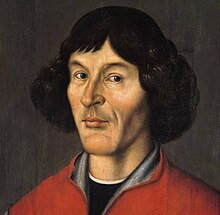Stars
There are millions and millions of stars in space. Stars are made when clouds of dust and gas swirl together and heat up.
The Sun
The Sun is the nearest star to Earth, sitting at the center of our Solar System. The light and heat from this huge, spinning ball of hot gas is what allows there to be life on Earth.
Profile
The Sun is one of billions stars located in the Milky Way galaxy. It is the largest thing in our solar system (1,392,684 kilometres diameter and the surface area is 11,990 times that of the Earth’s!). It makes up 98% of the matter in the solar system. Because of its size, it has a strong gravitational pull. It keeps the Earth, other planets and the moons other it positions. Without the gravity of the Sun, the Earth would go spinning off into space. The Sun is over 4.5 billion years old. Like all stars, the Sun is composed of a great burning ball of gases (temperatur 5,500 °C). It is made of 92.1% hydrogen and 7.8% helium. The Sun is 149.6 million kilometres from the Earth.
Hisory

Many years ago, people believed that Earth is the center of the univerce and the Sun rotated round the Earth. More than 2,000 years ago Aristarchus of Samos as the first person, suggested that the Earth and other planets moved around the Sun but it was not proved, so for the next 1400 years people believed that The Sun rotated around Earth. A Polish scientist - Nicholas Copernicus wrote a book ‘De Revolutionibus Orbium Coelestium’ which means ‘Concerning the revolution of the heavenly spheres’ in which he tried to prove that the planets moved round the Sun. Believe it or not, people who agreed with him were often thrown in jail or even put to death. The work of Galileo and Johann Kepler found Copernicus’ theory to be right.
How it is build?

The Sun can be divided into six layers. The layers of the Sun are as follows (from the center out): the solar interior composed of the core (which occupies the innermost quarter or so of the Sun's radius), the radiative zone, and the the convective zone, then there is the visible surface known as the photosphere, the chromosphere, and finally the outermost layer, the corona. The energy produced through fusion in the Sun's core powers the Sun and produces all of the heat and light that we receive here on Earth. The process by which energy escapes from the Sun is very complex. Since we can't see inside the Sun, most of what astronomers know about this subject comes from combining theoretical models of the Sun's interior with observational facts such as the Sun's mass, surface temperature, and luminosity (total amount of energy output from the surface).